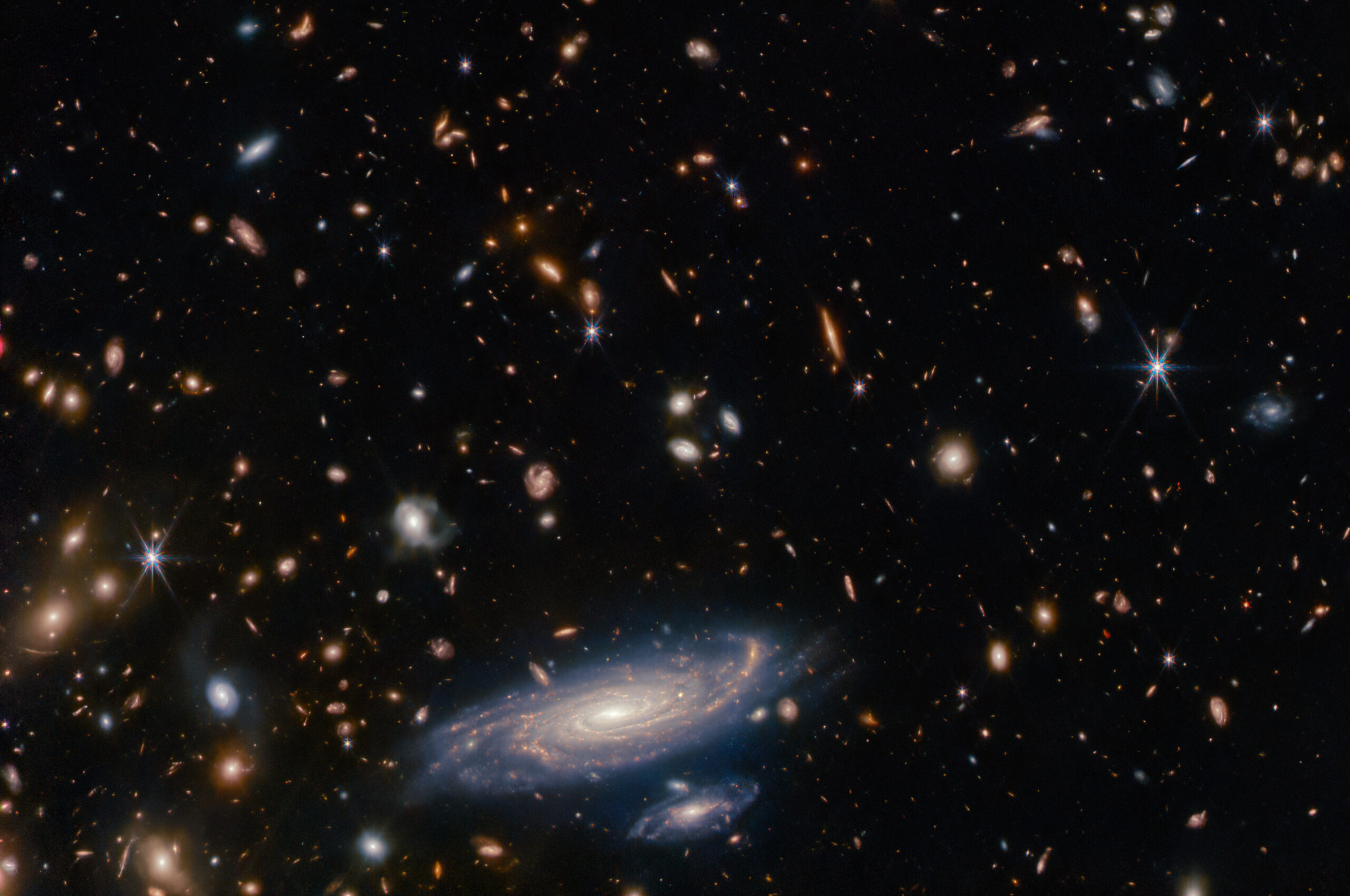BERN, SWITZERLAND – This landmark paper is the outcome of the 2024 ISSI Breakthrough Workshop, held at the International Space Science Institute (ISSI) in Bern, Switzerland. The workshop, co-chaired by Angela Adamo (University of Stockholm, Sweden), Pascal Oesch (University of Geneva, Switzerland) and Antonella Nota (ISSI, Bern, Switzerland), and convened together with Gabriel Brammer (Cosmic Dawn Center, University of Copenhagen, Denmark), Dan Coe (STScI, Baltimore, USA), and Jane Rigby (NASA GSFC, USA), brought together global cosmology experts across disciplines to synthesise the unprecedented wealth of imaging and spectroscopic data from JWST, and to shape the scientific dialogue around one of the most fundamental epochs in cosmology.
“With stunning clarity, JWST has opened a direct window into the early Universe”, said co-chairs Angela Adamo and Pascal Oesch. “This paper captures some of the breakthrough insights from its first years of observations—but this is just the beginning. We are witnessing the rewriting of our understanding of cosmic origins, and the research community will continue to push our horizons with this revolutionary facility for years to come.”
This perspective spans several key areas of discovery:
- A current census of early galaxies: their luminosities, structures, masses, and formation histories.
- The detection of chemical signatures in the earliest stars and galaxies, offering clues to their life cycles and enrichment processes.
- The discovery of massive black holes at unexpectedly early times, and what they reveal about black hole formation and growth.
- An in-depth look at the sources of cosmic reionization, and the emerging understanding of how the Universe became transparent to light.
“JWST is rewriting humanity’s understanding of how galaxies—like our own Milky Way—grew in the early Universe and formed the elements that make up everything we know,” said Jane Rigby, Senior NASA JWST Project Scientist and convener of the workshop. “With JWST, we are literally seeing back in time, to our own beginnings.”
JWST’s powerful imaging, broad wavelength range, and unmatched sensitivity have transformed our view of the high-redshift Universe. Galaxies and black holes are now seen to have formed far earlier than expected, rapidly building up stellar mass, dust, and heavy elements within just a few hundred million years. Notably, JWST has uncovered a surprising abundance of massive, luminous galaxies and compact star clusters in this early era—challenging existing models of galaxy formation. It has also revealed a population of supermassive black holes at unexpectedly early times, sparking renewed interest in their origins. Spectroscopic data show low but significant oxygen levels in early galaxies, pointing to either rapid self-enrichment or the possibility that we have yet to detect the very first galaxies that only consist of hydrogen and helium. JWST has also revolutionised our understanding of reionization. Thousands of galaxies from this epoch have now been identified, with individual ionised bubbles traced back to star-forming galaxies—beginning to map how the early Universe became transparent to light.
While these breakthroughs answer key questions, they also raise new ones—reshaping our understanding of how the cosmos evolved in its first Billion years.
“This is a living moment in science”, said ISSI Executive Director Antonella Nota. “The findings are extraordinary, but so is the way the community is coming together here at ISSI in Bern—across specialisms, across borders—to make sense of them, and share their findings with the world.”
The ISSI Breakthrough Workshop model was critical in enabling these advances. By fostering interdisciplinary discussion and intense scientific exchange, the workshop provided a unique platform for synthesising emerging JWST results. This collaborative, international approach is increasingly essential to navigate the scale and complexity of today’s space science.
As JWST continues its revolutionary observations, this perspective sets the benchmark for where we are—and where we are headed—in understanding our cosmic beginnings.
Adamo, A., Atek, H., Bagley, M.B. et al. The first billion years according to JWST. Nature Astronomy (2025). https://doi.org/10.1038/s41550-025-02624-5


